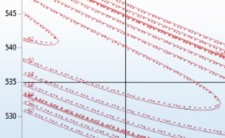Peter Goos presents four case studies from the Optimal Design of Experiments book he co-authored with Bradley Jones. He introduces each case by describing the type of experiment and when and why it is useful. Next, he demonstrates how to set up the experiment in the JMP software and how to analyze the resulting data.
Presentation material taken from Optimal Design of Experiments: A Case Study Approach by P. Goos and B. Jones.


